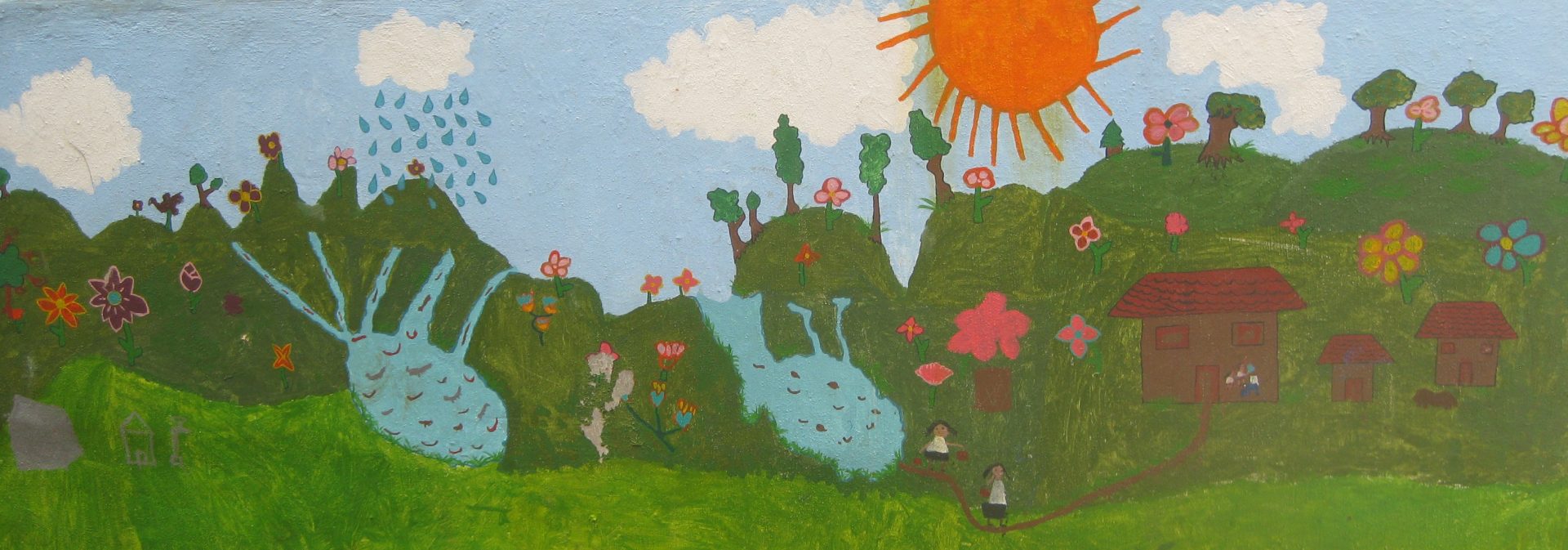Hey y’all!
I haven’t posted here in a while but I see that my friends have kept you fully up to date on everything we have been up to here!! I just got back from San Cristobal a few days ago and am still unpacking both my luggage and my experience. Over the next couple of days, I plan on making a few posts on my projects, things I learned, and reflections on my time there.
First up: The Three Faces of Casa del Agua. (Name inspired by Michel-Rolph Trouillot’s work, “The Three Faces of Sans Souci”). This blog post will be about the work I’ve done with Cantaro Azul over the summer, so it will contain technical and scientific details.

Hidden in the mountains towards the east of San Cristobal, Parque El Encuentro houses Casa del Agua. The roof of Casa del Agua has three sections, each made of different materials and sloping downwards in a different direction to capture the rainwater. The three roofs include (1) cement, (2) gravel and (3) bamboo fibre. From each of these roofs, water goes down a pipe and then gets filtered. For my project, I collected water samples from each of these roofs, before and after filtration, and then ran some tests on them to look at the quality of rain water collected from each roof.

The 3 groups of bottles are for each of the three roofs of Casa del Agua. In the bigger bottles, I collected water for physical and chemical analysis and in the smaller bottles, I collected water for microbiological analysis.

This is what my set up looks like when I’m collecting samples. One habit I’ve picked up here is to carry a notebook with me wherever I go – you never know when you will need to write something!

Shout out to this beautiful lizard who decided to give me company while I was collecting water samples. It is green from the top and blue from the bottom. You can also find it in the previous picture if you zoom in.
During the last few weeks, I gained a lot of experience with physical and chemical analyses of water quality. Some tests that Hector taught me include pH, conductivity, salinity, dissolved substances, hardness, turbidity, nitrates, nitrites, colour and manganese content. Hector also talked to me in detail about the significance of each test and the equipment needed for them. This has helped me think a lot about how awareness about water quality can be enhanced in my hometown by conducting on-site tests and sharing information with people. Usually, my spreadsheets look something like this after I finish carrying out tests:

And here is a picture of me carrying out a test for dureza/hardness of water!

In addition to analysis of water quality, I have also been keeping track of daily/weekly precipitation in San Cristobal. We set up 3 rain gauges for this – one at Parque El Encuentro, one at Cantaro Azul office and one at my own residence. This helped me put in perspective the importance of rain water collection. Here are some pictures of the rain gauge at Encuentro, which would not have been possible to set up without Ruben’s help!

Ruben and I setting up the rain guage.

The final product!
I have been interested in water quality for a few years now, particularly because my hometown has high levels of arsenic in water and is expected to face a severe shortage of drinking water soon. First-hand experience with these tests has helped me understand the nuances of water quality and access, and the various ways in which access can be increased. Moreover, I believe these quality tests are powerful in eliminating disinformation and providing clear information that can prompt action. I’m excited to use this knowledge to approach water, sanitation and hygiene issues in my hometown.
Thanks for sticking with me through the technical bits. Here’s a fun update: the other fellows and I finally got the chance to try Chapulines/grasshoppers – they are very famous in Oaxaca! We went to a restaurant called El Caldero and ordered this dish which came with guacamole and chapulines. It was my first time eating grasshoppers and I liked it!


Thank you for sharing your experience with water quality monitoring, Hafsa! I look forward to learning more about your projects and your experience in Chiapas.